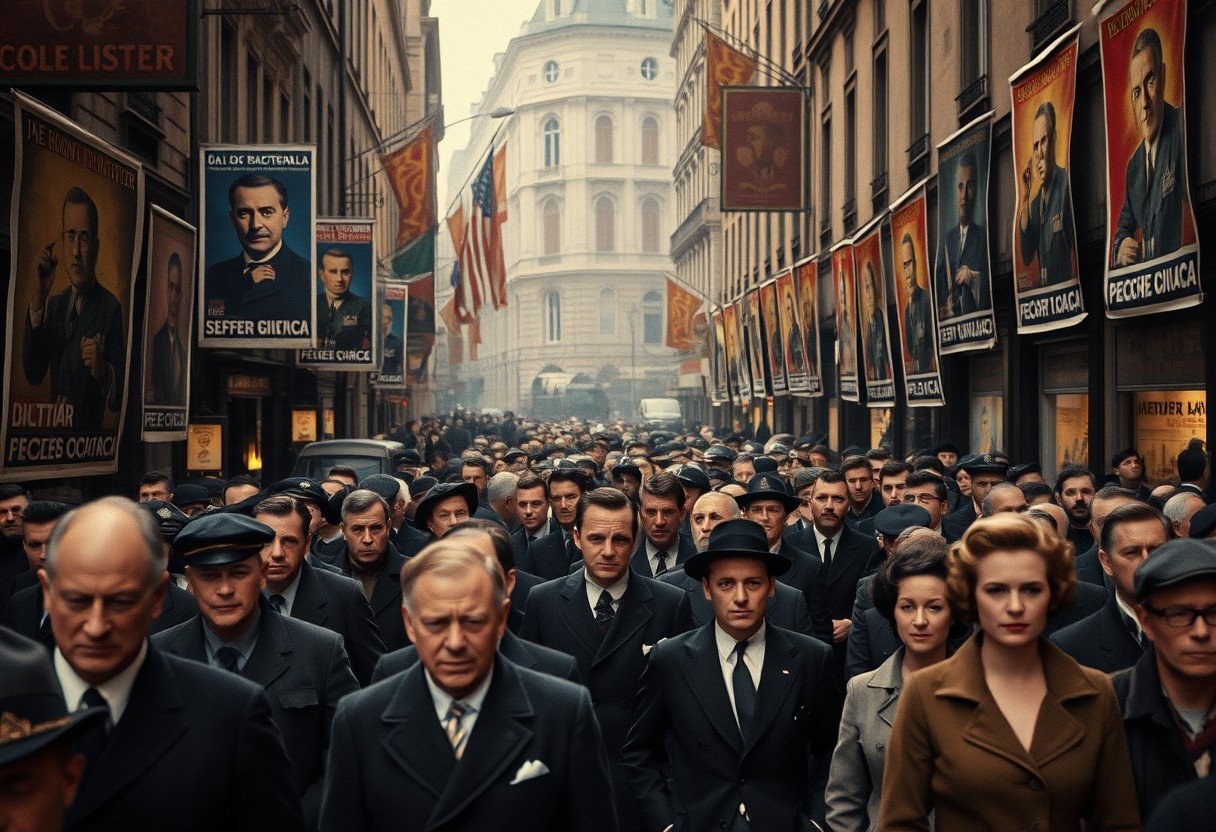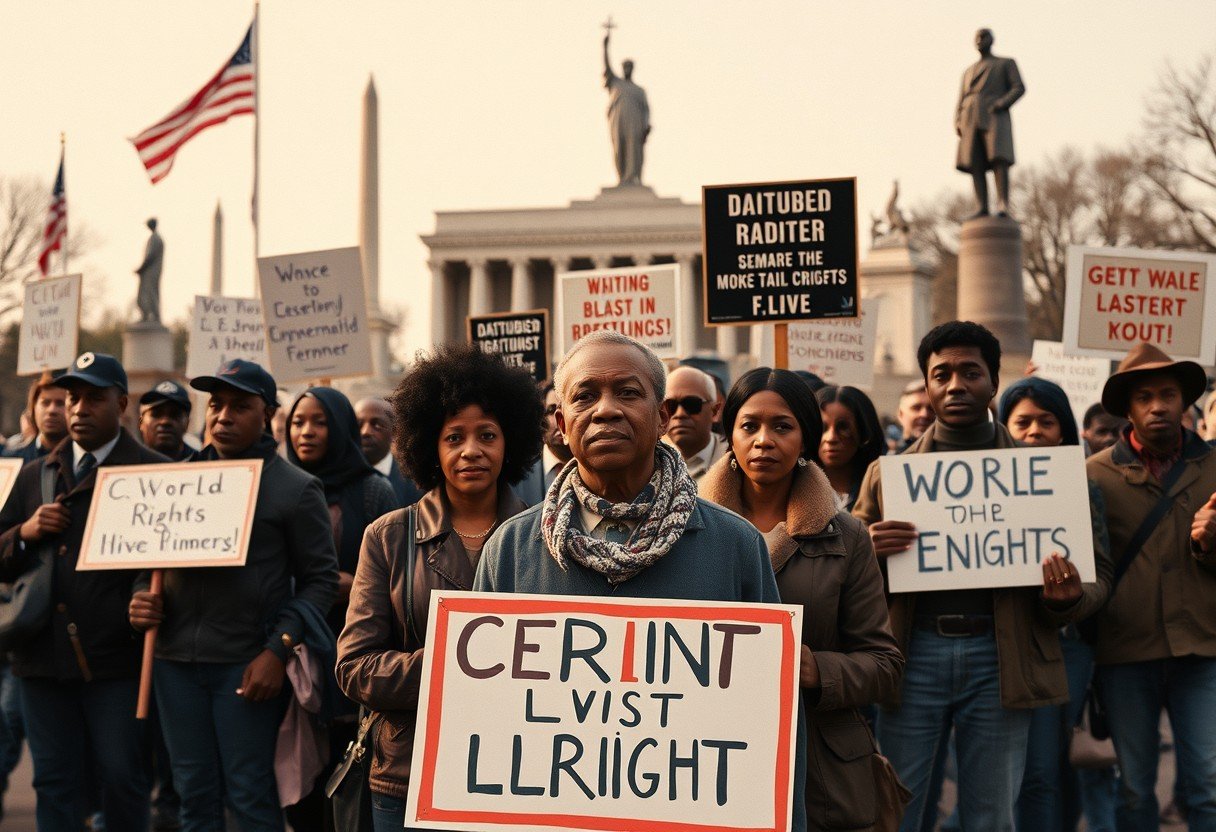The 1930s was a decade of immense turmoil, where dictators rose to power in Europe and Asia. This dramatic shift was not accidental but a result of severe economic despair, political weakness, and widespread social fear following World War I and the Great Depression. Understanding why people turned to authoritarian leaders is key to grasping how these regimes emerged and reshaped the world, leading directly to the devastation of World War II.
The Lingering Shadow of World War I
The end of World War I did not bring lasting peace. Instead, it left a legacy of bitterness and instability that created fertile ground for extremism. Treaties like the Treaty of Versailles imposed harsh terms on defeated nations, particularly Germany.
The treaty forced Germany to accept full blame for the war, lose territory, and pay crippling reparations. This created a deep sense of national humiliation and resentment among the German people. Citizens felt their democratic government had betrayed them by accepting such a harsh deal.
This environment made it easy for charismatic leaders to exploit public anger. They promised to tear up the unfair treaties, restore national pride, and reclaim lost glory. People who were desperate for hope and a return to greatness were drawn to these powerful messages.
Economic Collapse and the Great Depression
The Great Depression, which began in 1929, was a global economic catastrophe that became a primary driver for the rise of dictators. As economies collapsed, businesses failed, and unemployment skyrocketed across Europe and Asia.
Millions of people lost their jobs, savings, and homes. Poverty and hunger became widespread, leading to massive social unrest. Democratic governments seemed powerless to stop the crisis. They struggled with inflation and could not provide effective solutions, causing citizens to lose faith in their leadership.
In this chaos, radical ideologies became more appealing. Dictators promised quick and decisive action to fix the economy, provide jobs, and restore order. Their promises of stability and national strength were highly attractive to people who had lost everything and feared for their future.
Weak Democracies and Political Instability
Many of the new democracies formed after World War I were fragile. They lacked strong traditions of democratic rule and were often plagued by political infighting and frequent changes in government. This constant instability made them unable to deal with the severe economic and social problems of the era.
As democratic governments failed to meet the needs of their people, public trust eroded. Citizens grew frustrated with political debates that led to no real solutions. They began to see democracy as weak and ineffective. This disillusionment created a power vacuum that authoritarian leaders were eager to fill, promising the strong, unified leadership that people craved.
The Appeal of Extreme Ideologies
Amid the chaos, extreme ideologies like fascism and communism gained immense popularity. These movements offered simple, powerful solutions to complex problems and a sense of belonging to a greater cause.
Fascism, in particular, was intertwined with aggressive nationalism. Leaders like Benito Mussolini in Italy and Adolf Hitler in Germany used it to build powerful movements. They promoted the idea that the nation was more important than the individual and that a single, powerful leader was needed to guide it to greatness.
- They promised to restore national pride and military strength.
- They identified scapegoats, such as minorities or foreign powers, to blame for the country’s problems.
- They used powerful symbols, rallies, and propaganda to create a sense of unity and excitement.
At the same time, the rise of communism in the Soviet Union under Joseph Stalin created fear in other nations. Many wealthy and middle-class citizens worried about a communist revolution in their own countries. This fear made them more willing to support fascist dictators who promised to crush communism and maintain order.
Propaganda and the Control of Fear
Dictators of the 1930s were masters of propaganda and understood how to manipulate public emotions. They used new technologies like radio and film to spread their message directly to the masses, bypassing traditional media.
Their propaganda was designed to create a cult of personality around the leader, portraying him as a savior who could do no wrong. They controlled all sources of information, censoring newspapers and silencing any dissenting voices. This created an echo chamber where only the government’s message could be heard. By constantly broadcasting messages of fear, nationalism, and blame, they were able to unite the public behind them and justify their authoritarian rule.
Key Dictators who Shaped the Era
Several key figures came to define this period of rising authoritarianism. Each one exploited their country’s unique circumstances to seize total control. Their actions not only transformed their own nations but also set the stage for a global conflict.
| Leader | Country | Ideology | Key Promise |
|---|---|---|---|
| Adolf Hitler | Germany | Nazism (Fascism) | Restore German greatness and overturn the Treaty of Versailles. |
| Benito Mussolini | Italy | Fascism | Revive the glory of the Roman Empire and restore order. |
| Joseph Stalin | Soviet Union | Communism | Create a modern industrial superpower for the working class. |
These leaders used terror and oppression to eliminate their opponents and maintain a firm grip on power. Their aggressive and expansionist ambitions would ultimately lead the world into another devastating war.
A Failed International Response
The international community largely failed to stand up to the rising dictators. Nations like Britain and France, haunted by the memory of World War I, adopted a policy of appeasement. They hoped that by giving in to some of the dictators’ demands, they could avoid another major war.
This strategy backfired. Appeasement only emboldened leaders like Hitler, who saw it as a sign of weakness and continued his aggressive expansion. The League of Nations, an organization created to prevent future wars, proved to be powerless. It had no army to enforce its decisions and key countries, like the United States, were not members. Its failure to stop aggression in Asia and Europe showed dictators that they could act without consequences.
Frequently Asked Questions about the Rise of Dictators
What was the main economic factor that led to the rise of dictators?
The Great Depression was the single most important economic factor. It caused mass unemployment, poverty, and social unrest, which made people desperate for strong leaders who promised to restore economic stability.
How did the Treaty of Versailles contribute to Hitler’s rise in Germany?
The treaty imposed harsh penalties on Germany, creating a deep sense of national humiliation and anger. Hitler exploited these feelings, promising to reject the treaty and restore Germany’s national pride, which won him widespread support.
Why were democratic governments so weak during the 1930s?
Many new democracies were fragile and politically divided. They were unable to create effective policies to combat the Great Depression, which led citizens to lose faith in democracy and seek alternative, more authoritarian forms of government.
What role did propaganda play in helping dictators gain power?
Propaganda was a critical tool used to control public opinion and build support. Dictators used radio, film, and newspapers to create a cult of personality, spread their ideology, and demonize their opponents, effectively manipulating the public.
What is fascism and how did it appeal to people?
Fascism is an ideology that glorifies the state above the individual and emphasizes aggressive nationalism and militarism under a single dictator. It appealed to people by promising to restore national strength, create order out of chaos, and provide a sense of unity and purpose.






Leave a Comment